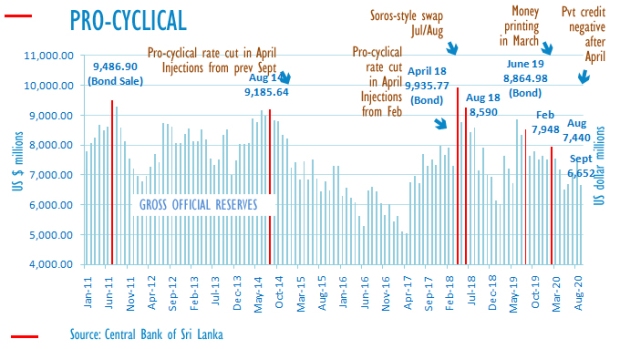COLOMBO – Sri Lanka’s gross official reserves had dropped to US$ 6,652.8 million by the end of September 2020, from US$ 7,430 million in August, central bank data showed.
Sri Lanka’s forex reserves are made up of central bank’s reserves and inflows to the Treasury from foreign borrowings.
In recent weeks the central had been able to buy dollars (against new rupees) from forex markets despite money printing due to weak private credit as well as import controls.
Import controls which hits trading businesses may also be contributing to the credit downturn.
Weak credit leads to a fall in private consumption and , which in turn slows imports.
In September, the central bank had bought US$ 56 million in forex markets while selling US$ 1.25 million, down from purchases of US$ 121 million and sale of US$ 28 million.
Economic analysts point out that when credit weakens monetary conditions automatically turn counter-cyclical in a pegged regime, leading to excess liquidity and rate falls.
In August private credit turned positive.
Sri Lanka however has a problem rolling over debt due to credit downgrades in the wake of tax cuts and March and April falls of the rupee.
Earlier this month, Sri Lanka repaid a US$ 1 billion sovereign bond, in part by using forex reserves.
Sri Lanka is expecting around US$ 700 million from China in October.
-economynext.com


